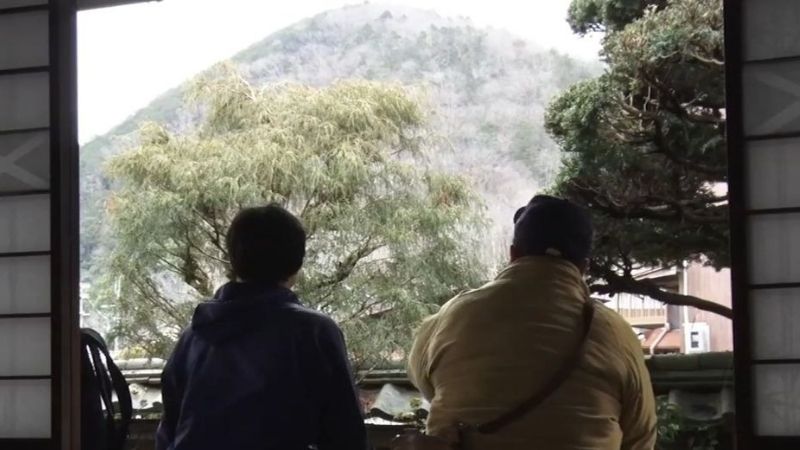True to its arresting title and media sensation subject matter, Atsushi Sakahara’s Me and the Cult Leader – A Modern Report on the Banality of Evil makes for some undeniably riveting viewing – but for the most unexpected of reasons. Ostensibly a revisitation of the 1995 sarin gas attack on Tokyo’s subway system carried out by members of the Japanese Aum Shinrikyo religious cult – which left a dozen dead and hundreds more to suffer lifelong complications, including the director himself – the film is as much a story about Sakahara’s relationship with the mastermind behind the inexplicable acts of terrorism as Roger & Me is about Michael Moore and a similarly invisible yet omnipresent GM CEO.
Renunciate
The onscreen man at the center of Sakahara’s doc cannot, by any stretch of the imagination, be described as a leader, let alone the head of a lethal cult. Shy and uncharismatic, Hiroshi Araki is little more than an eerily robotic follower with no direct connection to the infamous crime, an executive of Aleph (the rebranded Aum Shinrikyo) responsible for its PR. This is a bit ironic since the quiet Araki – unlike the film’s former adman director who spent a year negotiating for access – seems to have no talking points nor sense of spin. Nevertheless, the self-proclaimed «renunciate» (as he’s renounced the world) agrees in good faith to participate in the director’s cinematic search for answers – and an apology. Neither of which proves easy to come by.
The onscreen man at the center of Sakahara’s doc cannot, by any stretch of the imagination, be described as a leader
And it is this delicate dance between filmmaker and subject that proves most compelling, as together the duo crisscross Japan, visiting each of their hometowns and their shared alma mater, Kyoto University – where Sakahara graduated with a degree in economics and Araki was recruited less than a year before the attack (after which the group was smartly banned from the country’s campuses). The road trip is both visually arresting – intoxicating images of the rural countryside, complete with tranquil waters and lush forests – and philosophically unnerving. For as Sakahara respectfully questions the reticent Araki and the story of his disturbing life begins to unspool a friendship incrementally develops – or does it? An avid listener, Sakahara is quick to extend a gentle hand – at one point even purchasing a jacket for Araki whose few possessions don’t seem to include season-appropriate clothing – and yet he’s a director with a less than transparent agenda. So here’s where things get morally complicated.

Deprogramming
While Sakahara’s intentions indeed seem pure – many of his queries are designed to deprogram, to get his interlocutor to rethink his very dedication to his guru – it’s nonetheless disturbing to witness someone so easily manipulated into joining a cult slowly being manipulated into apologizing for that cult’s infamous actions (which, of course, Araki wasn’t involved in so was never arrested and held in judgment for). And since this guy is no «leader» but a mere sheep who long ago lost touch with his soul, one might ask what exactly is the point of pulling a mea culpa from a brainwashed victim anyhow? Ultimately, Sakahara is hoping in vain to draw blood from a stone. Neither banal nor evil, Araki is simply a traumatized, painfully awkward, middle-aged man in need of professional, not documentary, intervention. Which leaves one wondering if the means – including sharing a guilt-filled meal with Sakahara’s parents, and staging a press photo-op commemorating the attack with a very reluctant Araki – in fact, justify the unsatisfying (for the director) ending.






